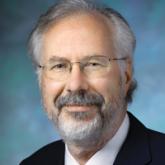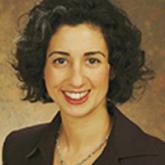Conference Coverage

Mobile Devices May Provide Accurate Seizure Detection and Help Prevent SUDEP
HOUSTON—Mobile or wearable devices that observe autonomic and motor changes may provide seizure detection, according to an overview presented at...

BOSTON—Patients with epilepsy not only want to know about sudden unexpected death in epilepsy (SUDEP), they feel it is their right to be informed, according to survey results presented at the 69th Annual Meeting of the American Academy of Neurology. “The most astonishing finding of our study was that 100% of participants felt it was their right to be informed about SUDEP,” said Lucretia Long, MS, RN, CNP, Clinical Assistant Professor of Neurology and an epilepsy nurse practitioner at Ohio State University in Columbus.
Patients with epilepsy are 24 times more likely to die suddenly, compared with age-matched controls. SUDEP is responsible for 2% to 18% of epilepsy-related deaths and is the most common epilepsy-related cause of death, particularly in patients with intractable seizures. SUDEP takes more lives annually in the US than sudden infant death syndrome (SIDS).
The decision to discuss SUDEP with patients has created much debate over the years. “Many physicians are hesitant to discuss this, due to their perception of imposing unnecessary fear, while others argue that SUDEP disclosure could aid in improving patient compliance and also encourage patients to modify factors that can lower seizure thresholds,” Ms. Long explained.
SUDEP etiology has been studied, as have physician perspectives on the matter, but limited data exist regarding patients’ feelings about SUDEP disclosure, Ms. Long said.
She and colleagues assessed via questionnaire adult patient feelings and viewpoints associated with SUDEP. For their study, every third patient at the Comprehensive Epilepsy Center at the Wexner Medical Center at Ohio State University was given a one-page SUDEP information sheet. The information sheet is available on www.epilepsy.com and was developed by the National Epilepsy Foundation of America. Patients who consented were then asked to complete an eight-item questionnaire assessing their perception of SUDEP disclosure.
To be eligible for the study, patients had to have a confirmed diagnosis of epilepsy and be able to read and write English. Those with psychogenic nonepileptic seizures or other psychiatric conditions were excluded. However, patients with comorbid depression were eligible to participate in the study.
A total of 67 patients received the handout; 97% of those patients completed the questionnaire. Fifty-eight percent were female, the overwhelming majority of patients had a high school diploma or associate degree, and most patients resided with family members or caregivers. The majority of patients had a long-standing history of epilepsy; 76% had been diagnosed with epilepsy for 10 years or longer, and almost 46% of patients had a history of generalized tonic-clonic seizures. “A history of tonic-clonic seizures is important, particularly as we look at risk factor reduction,” Ms. Long said. “We know, for example, that patients with tonic-clonic seizures, especially nocturnal intractable tonic-clonic seizures, are more likely to die from SUDEP.”
Survey results revealed that 100% of respondents felt it was their right to be informed about SUDEP. “This was regardless of participant education, sex, and age,” Ms. Long reported. “Both male and female, young and old, and those with higher versus lower education levels all felt that it was their right to be informed about SUDEP.” About 84% of patients also felt that SUDEP disclosure would encourage them to be more adherent to their antiepileptic drug regimen, and 87% felt that SUDEP disclosure would encourage them to avoid factors that can lower seizure threshold.
Thirty percent of patients surveyed admitted that SUDEP disclosure made them more frightened. “This is particularly interesting because most physicians are a little hesitant to discuss this due to fear,” Ms. Long said. “However, 100% of the 30% still felt it was their right to be informed.”
When asked when patients should be informed, 90% of patients felt they should be informed shortly after diagnosis, and 50% felt that they should be informed about SUDEP at first diagnosis.
“Patients not only want to be informed about SUDEP, they actually feel it is their right to be informed,” Ms. Long said. “In our study, patients felt that physicians should be responsible for disclosing SUDEP and that SUDEP awareness motivated them to be more compliant and also to better manage those factors that lower seizure threshold.”
In summation, Ms. Long cautioned against generalizing her study findings. “These were patients with a long-standing history of epilepsy—10 years or longer. These were not patients who were newly diagnosed. But a very interesting finding is that 50% felt they should be informed at first
diagnosis.”
—Glenn S. Williams
Keddie S, Angus-Leppan H, Parker T, et al. Discussing sudden unexpected death in epilepsy: are we empowering our patients? A questionnaire survey. JRSM Open. 2016;7(9):2054270416654358.
Xu Z, Ayyappan S, Seneviratne U. Sudden unexpected death in epilepsy (SUDEP): what do patients think? Epilepsy Behav. 2015;42:29-34.

HOUSTON—Mobile or wearable devices that observe autonomic and motor changes may provide seizure detection, according to an overview presented at...

HOUSTON—Sudden unexpected death in epilepsy (SUDEP) in children is rare, but can it be avoided? The majority of pediatric SUDEP cases may occur in...
